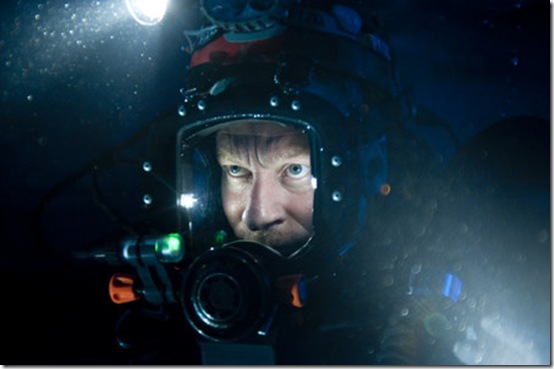Like every good idea capitalism has leeched onto and subsequently tarnished, 3D technology has already jumped the shark in its light-speed ascent from cult novelty to the establishment standard of big-budget moviemaking.
Dimensions have thus far been added to movies so atrocious I wouldn’t see them if they leaped off the screen, ran to my house and did my laundry for me. I enjoyed The Green Hornet despite its obligatory 3D presentation, not because of it, and the addition of 3D to the asinine Jack Black vehicle Gulliver’s Travels couldn’t have been more superfluous than a 3D taping of Charlie Rose.
But watching Sanctum, which was executive-produced by James Cameron and shot with Avatar’s technology, it’s easy to remember what was so exciting about the advent of realistic 3D in the first place. What galvanized a nation to abandon On Demand and Netflix for one night and actually see a movie in a theater a year ago – even if said movie was really a reductive, half-baked antiwar allegory dressed up with jaw-dropping cinematography – has the potential to do so again this year.
Beyond a few IMAX-worthy aerial shots of nature’s rich bounty, Sanctum is set almost entirely in the underwater Esa-Ala Caves in the South Pacific, so the setting isn’t as imaginative as Avatar’s. But the details are just as, well, detailed. Rather than having us simply look at multiple dimensions on a flat screen, director Alister Grierson does 3D the old-fashioned way, by bringing elements like dripping water and beams of light off the screen and right in front of our eyes. I imagine that, like Avatar, it’s as visually immersive as the cinema can be.
But enough tech talk – the story is still the most important element, and Sanctum’s narrative never reaches the astonishing level of its storyboards. The central conflict is the rote, surprise-free journey of a prodigal son reuniting with his disconnected, emotionally absent father. Josh (Rhys Wakefield), an extreme adventurer, resents his father Frank’s (Richard Roxburgh) obsessive digging in remote caves.
Frank has become a leading authority on dangerous spelunking, to the detriment of any kind of personal life, and neither father nor son has taken the time to understand one another. But when a tropical storm causes both men, and a few other divers, to be trapped in the treacherous cavern, they must work around their grievances and escape certain death.
As Josh, Wakefield has a pleasing television persona; his resume so far is scant, but I imagine he would make a strong replacement on Grey’s Anatomy or House should the opportunity arise. At any rate, he fares much better than the monotone performance of the gravel-voiced Roxburgh, whose Frank oscillates between two moods: broodingly incensed and broodingly taciturn.
Sanctum follows formula to the T, so there’s no question the two central characters will end the movie lovey-dovey. The open question, and it’s a pretty compelling one, is whether anyone will make it out of the cave alive. Sanctum is a brutal movie, a traditional suspense yarn sprinkled with squishy horror-movie close-ups and enough expletives to earn its R rating (It’s refreshing to see a film that doesn’t even attempt to get the more box-office-friendly PG-13; here, the characters say what anyone would when they’re in a state of near-death panic).
In fact, the final death count, while not giving away specifics, is uniquely high for a movie that is ostensibly a feel-good Hollywood survival story.
However, as an emotional roller coaster worth your tears, Sanctum is half the movie 127 Hours is, and it tries twice as hard to move you. Sanctum confirms that even though James Cameron’s stamp of approval can nearly beat an artistically dead technological horse back to life, he can’t prevent another example of two-dimensional characters on a three-dimensional screen.
SANCTUM. Director: Alister Grierson; Cast: Rhys Wakefield, Ioan Gruffudd, Richard Roxburgh, Alice Parkinson, Dan Wyllie, Christopher Baker; Distributor: Universal; Rating: R; now playing at area theaters
